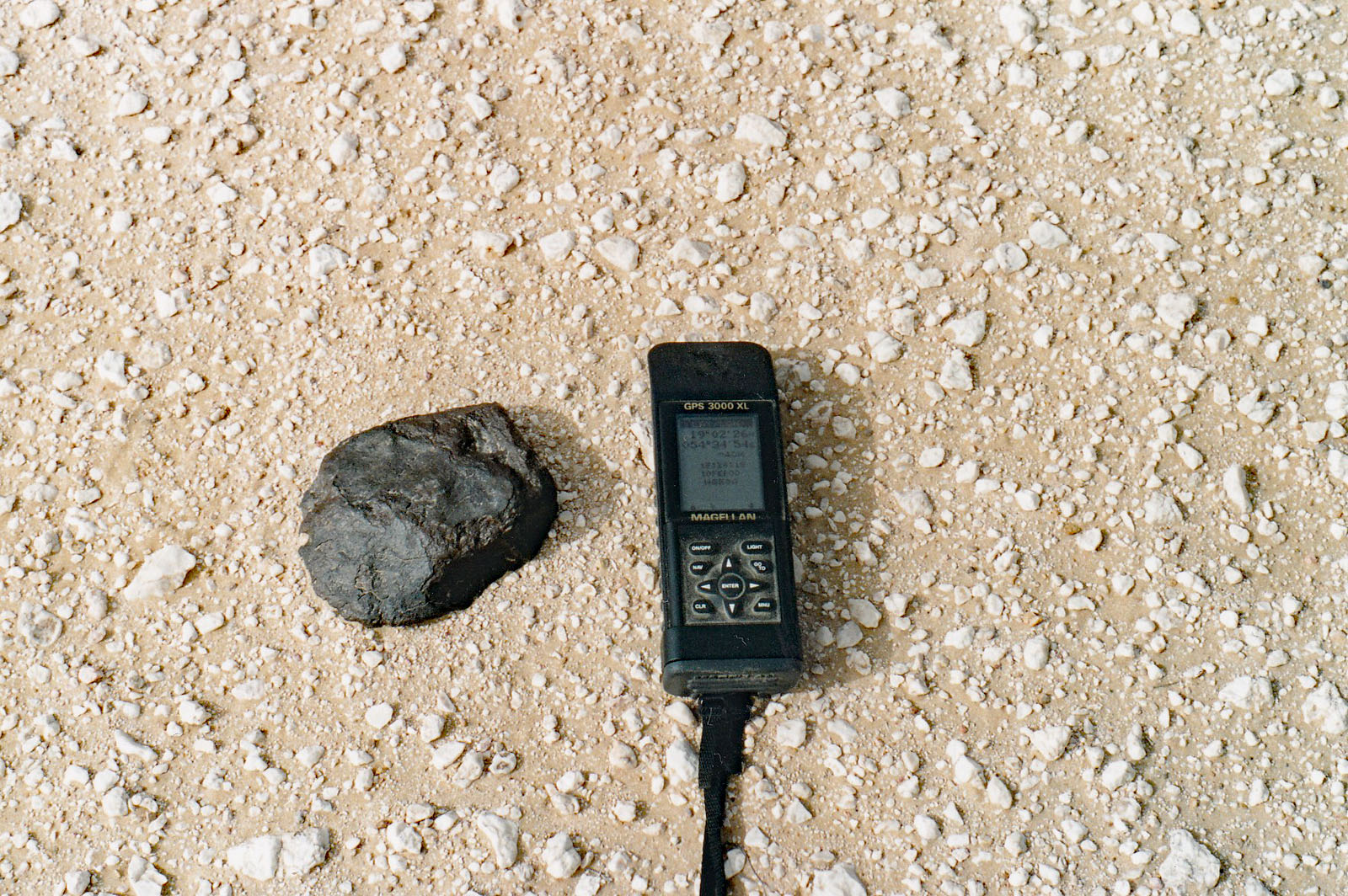|
Roll Overs:
1
2
3
4
5
6
7
8
|

|
|
Copyright (c) jnmczurich. Use allowed - include photographer's name:.
|
LL3/4
TKW 1452 grams. Fall not observed. Found 2000, Oman.
  
jnmczurich writes:
Dhofar 168 was found in 2000, before it was explicitly forbidden to collect meteorites in Oman deserts.
Until now, Dhofar 168 is the only meteorite with the classification LL3/4, partially unequilibrated, shock veins, S4, W1.
While looking to the mean values of the Olivine Fa (mole%) 24.3 and Pyroxene Fs (mole%) 19.4 contents alone, Dhofar 168 would actually be classified as L3/4 and not as LL3/4, but the Fa/Fs values are not quite so simple with unequilibrated or weakly equilibrated chondrites.
the following information is taken from former personal communication with Andreas Ruh (one of the two classifiers that time from University of Freiburg/Germany):
Reference: Rubin, A. E. (1990) Kamacite and olivine in ordinary chondrites - Intergroup and intragroup relationships. Geochim. Cosmochim. Acta 54, 1217-1232.
There is still a large scatter in the Fa and Fs values with unequilibrated or weakly equilibrated chondrites. Since the pyroxenes and olivines to be measured are randomly selected, there are always certain deviations from the actual values. In addition, these values not only differ between the individual chondrite groups (H, L and LL), but there are also scatters within a group. The Fa and Fs values tend to be lower for unequilibrated or weakly equilibrated chondrites than for more equilibrated representatives (see p. 1229 of the paper cited above). Rubin cites one possible reason for this as the fact that the FeO-rich olivines are preferably found in the matrix as small grains (2 μm or smaller). As a result, they are rather underrepresented in microprobe analyses (see point 1 on page 1229). The peak was an indication for us of the direction in which the composition would develop if the material had been more equilibrated. We therefore took other characteristics into account. Another important clue is the Co content in the kamacites. Rubin also addresses this. At the time, we determined an average Co content of 1.52 wt.% in the kamacite. This clearly indicates an LL chondrite (please take the different units into account, Rubin uses mg/g).
Pic. 1: single individual as found in-situ in the virgin desert, 1.452 kg
Pic 2 to 5: polished end section 700.7 g (little less than half of the stone, but it is the todays main mass)
Dimensions of end section: 99 x 75 x 60 mm
Pic 6: Smaller partial slices (6.30 g, 7.43 g, 0.59 g, top to down in the picture) and one thin slice (20.99 g), available for trade on request
Pic 7 and 8: thin section pictures were taken with the use of cross-polarized filter
|
Found at the arrow (green or red) on the map below
|
|
| |
John Divelbiss
8/30/2024 1:04:32 PM |
Nice meteorite and interesting post on some unique aspects on chondrites. |
Michael Mulgrew
8/30/2024 10:49:22 AM |
In situ photo, yay! |
| |
|